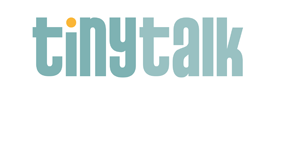“If I teach my child to use sign language, will their speech be delayed?” The quick answer is no. There is no scientific research or evidence to suggest that using sign language has a negative impact on speech development.
In fact, signing with your child can have a hugely positive influence on their language skills, and many families have reported accelerated speech due to signing first and here’s why…
- When signing with hearing children, it is a springboard to spoken language. Our TinyTalk motto is, “See it, say it, sign it.” By repeating signs so often on a daily basis, and saying the word each time, you’re increasing your baby’s exposure to spoken language.
- Children who are signed to have the ability to communicate effectively many months before those who aren’t, which means they’re far more used to using language, e.g. making connections between ‘things’ and their names, conveying their thoughts and feelings, and more importantly being understood. As a result they can be much calmer and happier which benefits their mental health and all-round wellbeing.
- The innate desire to speak, (in a hearing child with no known communication difficulties), cannot possibly be slowed down or held back; it’s as inevitable as growing! As children begin to speak (at whatever age they are naturally ‘wired’ to do so), they’ll do so alongside their signing. This is enormously useful to clarify spoken words that are likely to be unclear at first. They usually drop the signs when they’re no longer needed to make themselves clear.
- Teaching signing in hearing children involves visual, auditory and more importantly kinaesthetic (VAK) elements. Using VAK techniques, i.e. ‘doing’ something physical whilst learning, has been scientifically proven to help improve language retention and is used in the most effective educational environments. This is the exact reason why ‘Jolly Phonics’ is taught in the majority of schools today and each sound is given a corresponding action.
To find your nearest class, visit TinyTalk today!

2,017 Replies to “How Signing Helps Language Development”